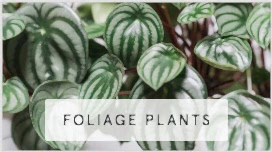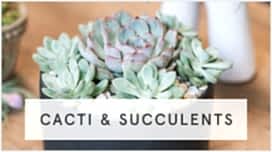A Guide to Bringing Outdoor Plants Inside for Fall

A Guide to Bringing Outdoor Plants Inside for Fall
When the temperature starts to cool outside and you feel fall in the air, your gardening adventures don’t have to stop. It's still possible to enjoy more vegetables and herbs grown from your land. If you bring your outdoor plants inside, they will survive the cold nights and early mornings that are typical of fall and winter. This extends the growing season and keeps fresh, homegrown food in your household for as long as you need. Learn about how to transfer your outdoor plants inside so that you can get the most out of your garden.
Your Region, Your Timeline
This guide serves as a general tutorial for outdoor plant transitions. Each region has unique weather patterns and average temperatures. You should always adjust your actions according to your locale's specific weather. For instance, if you live in the south, fall is usually shorter and significantly warmer than in the northern areas.
In high elevations and the north, fall starts a lot earlier and includes colder nights and mornings. If you know that your area gets colder quickly, start your outdoor plant transition earlier. Overall, your plants should not be outside unprotected when the overnight temperatures fall below 45 degrees and there is a danger of frost. If you want a few more weeks of outside time, use a greenhouse or cover your plants overnight.
The Winterization Process
It's a best gardening practice to begin winterizing your land in the fall and prepare it for next spring's planting. The four main tasks to do for your lawn and garden are:
1. Remove your garden’s plants: Clear your garden so you have an open yard to winterize. This sets the stage for fertile soil that is ready for the next planting season.
2. Mowing and leaf removal: The final mow before winter yard care makes it easier to treat the yard since it will be clear of weeds and debris.
3. Aeration: If you have a large yard and garden, you should invest in a push tiller that will allow you to cover more ground compared to a manual aerator. This process makes the soil “breathe” by puncturing the soil with lances to let in more oxygen.
4. Fertilization: Apply the correct fertilizer for your soil type and desired crops for next year. This process is faster when you use a rolling fertilizer spreader.
If the weather is still mild, you can get away with moving your crops into planters and placing them on your porch. A portable greenhouse can also extend some outdoor growing time when the nights are brisk but not too cold. You can later transfer these plants inside when the days get particularly cold. Need help finding the right greenhouse? Ask our garden design team for some pointers.
Step 1: Get Rid of Bugs
Garden plants attract a lot of fans. Unfortunately, not all of them are helpful. Pests like aphids and mealybugs like to hitch a ride on crops and try to get a first-class ticket inside your home to continue their feast.
To protect your plant from getting consumed while indoors, inspect each transfer thoroughly and remove the bugs with gloves. They are sneaky and can hide on the stems and under leaves, so take your time with each plant before you place them in a pot with its correct soil. It’s important to not let in bugs like spider mites because they can multiply quickly and get to your other plants.
Pro tip: To get rid of pest eggs, gently hose down each plant and wash them with a natural insect repellant like neem oil or insecticidal soap. After the plant dries, you can transfer it to a fresh pot of soil.
Step 2: Make the Transition Gentle
Sudden changes can shock plants, which can cause them to wilt or die. This is why you shouldn’t wait too long after the temperatures outside average 50°F. Since indoor temperatures average 65-75 degrees, this is not too much of a change in temperature.
To ensure that your plants handle this transition well, use a hybrid approach: Bring your plants inside at night and place them outside during the day. Then, gradually increase the time the plant spends inside during the day until it’s inside full-time. In this process, having portable pottery that drains well is key to your success.
Step 3: Provide Enough Light
Fall and winter naturally have less light during the day. In fact, this phenomenon triggers a dormant state in plants and the natural season cycle. To encourage your plants to produce their final crops indoors, provide the same type of light that they need to be fruitful outdoors.
The best place for your plant is near a large window with a southern exposure, which captures the most light. However, no matter how much natural light you have, you still need some indoor growing lights to supplement your plant’s need for growing season lighting.
Pro tip: Regardless of the right preparations, some plants that are used to direct sunlight can lose leaves and wilt after going indoors — even with a gentle transition. Give your plant some time and continue to apply the right lighting and it will come around and regrow its leaves.
Step 4: Manage Water and Humidity Levels
When your plants are indoors, it's time to adjust your watering routine. Indoor plants don't need as much watering as outdoor plants. A good rule of thumb is to only water your plants when the soil feels dry. Never overwater your plants because it can cause root rot, even with a well-draining pot.
Also, humidity levels decrease in the winter, especially indoors. Keep them away from drafty doors and place them near a portable humidifier so that the levels are between 50 and 60 percent humidity. An ideal place would be a sunroom or a spare room in the house where you can install a humidifier that doesn't affect the rest of the house.
Pro tip: No humidifier? No problem! Place your plants close together to help them humidify each other. This is a short-term solution but can keep your plants healthier until you can get a humidifier or a humidity tray. A humidity tray is simply a saucer with some pebbles and water. Its water evaporates slowly in the room to humidify the plants. This works best in an enclosed space instead of a large room. When the levels are low, simply add more water.
Do you need more potted plants, garden design tips, or some plant-boosting products to make your indoor garden thrive? PlantShed is ready to help you cultivate a fruitful indoor garden this fall and winter.












